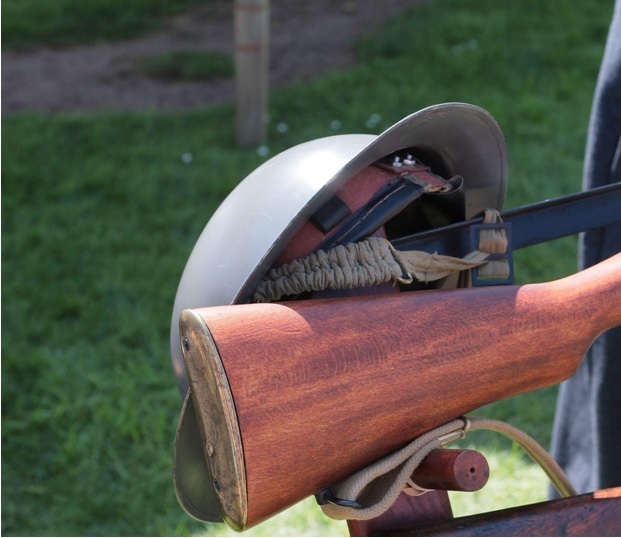20 Things You Didn’t Know About Lee-Enfield Rifles
Jun 12th 2024
Looking for a Lee-Enfield for sale? Did you know these facts about them?
- The Enfield is actually a redesign of the Lee-Metford (which also bears the name of James Paris Lee, who designed it), which was itself a replacement for earlier, single shot Martini-Henry service rifles.
- Most agree that the Enfield’s bolt closure and overall action mechanism feel very smooth. This is because of the bolt’s helical locking lugs, which distribute the entire closing cam action over the entire mating faces of the bolt and receiver.
- The predecessor to the Enfield, the Metford mentioned above, had shallower polygonal rifling that offered higher muzzle velocities and which made cleaning the bore of fouling much easier. However, the polygonal rifling wore down much more quickly, necessitating a redesign with deeper, square cut rifling that was eventually used by the Enfield.
- The Lee-Enfield enjoyed a long service history, from its introduction in 1895 until 1957. Countless Enfield rifles are still available as military surplus firearms.
- An Enfield chambered in .303, in the right hands, has an effective firing range of more than 500 yards.
- More than 17 million Lee-Enfield rifles were ultimately produced and issued.
- Though the British Empire commissioned the Enfield, more than 50 countries around the world have used them at some point or other.
- The Lee-Enfield’s short throw enabled soldiers to fire quite rapidly. Skilled soldiers could fire up to 30 aimed shots per minute - nearly as fast as a shot every two seconds.
- Some soldiers were so fast with the Enfield, in fact, that some Germans believed they were beset by machine gun crews during key moments in the First World War, when in fact, they were only being fired upon by “Tommies” with Enfield rifles.
- More than 20 variants of Enfield rifle were produced, each of which was intended to offer users a specific advantage.
- For instance, in World War I, the Australian Army modified some SMLE No. 1 Mk III rifles with heavy barrels, cheekpieces, and telescopic sights, to make them suitable for use as snipers.
- One of the early variants, the SMLE (or “Smelly”) for “Short, Magazine, Lee-Enfield” was created with a barrel shorter than the earlier MLE, (or “Emily”) “Magazine, Lee-Enfield.” The shorter barrel was intended to lighten the rifle and improve handling, but was not met without concern, as some believe the rifle would be less accurate with a shorter barrel as a result of the shorter sight radius, and that recoil would be too harsh.
- A select number of Enfield rifles were produced, known as “No. 8 Enfields” which were single shot rifles chambered in .22LR, to be used for training purposes.
- Some Enfields have been converted by outfitting with smoothbore barrels, and re-chambered in .410 shotshell.
- In Australia, civilian ownership of rifles chambered in military cartridges (like .303) was heavily restricted. As a result, some Enfields were converted to wildcat cartridges like .303/25 or .303/22.
- The Enfield has even been modified into a variant that enabled automatic fire, the Howell automatic rifle, which in essence was nothing more than an Enfield with a gas piston. It was reliable but not ergonomic and recoil was stiff, so these rifles were not very popular.
- In 1954, after the United Kingdom joined NATO and made a commitment to adopt the 7.62x51mm NATO cartridge, a number of Enfield rifles were converted to accommodate the new cartridge. These new rifles, termed L8 Enfields, featured new barrels, magazines, bolt faces, extractor claws, and rear sights.
- Many World War One-era Lee-Enfield rifles for sale are marked with “SSA” or “NRF,” which stand for “Standard Small Arms” and “National Rifle Factory” respectively. Some are also stamped with “GRI” for “Georgius Rex, Imperator” meaning “King George, Emperor.”
- There are rifles known as “Khyber Pass Copies” which are rifles produced by gunsmiths in the Khyber Pass region of Pakistan. Many of them are patterned after Enfield rifles. They are generally recognizable by their poor workmanship, errors, or use of low-quality materials.
- After the Second World War, there was a large influx of surplus Lee-Enfields for sale in Commonwealth countries as well as in the United States. Many of these were sporterized and converted to target and hunting rifles.
- More than nine official producers have manufactured Lee-Enfield rifles, including the Royal Small Arms Factory in Enfield (from which the rifle takes its name) as well as Birmingham Small Arms Company, Lithgow Small Arms Factory, Rifle Factory Ishapore, and Savage Arms.

Looking for a Lee-Enfield for Sale, or For Lee-Enfield Parts?
SARCO has one of the largest collections of gun parts and accessories. Whether you’re looking for a Lee-Enfield for sale or just Enfield parts for a specific variant, we can help you find what you need. Take a look through our full collection and get in touch with us at 600-250-3960 if you have any questions.

